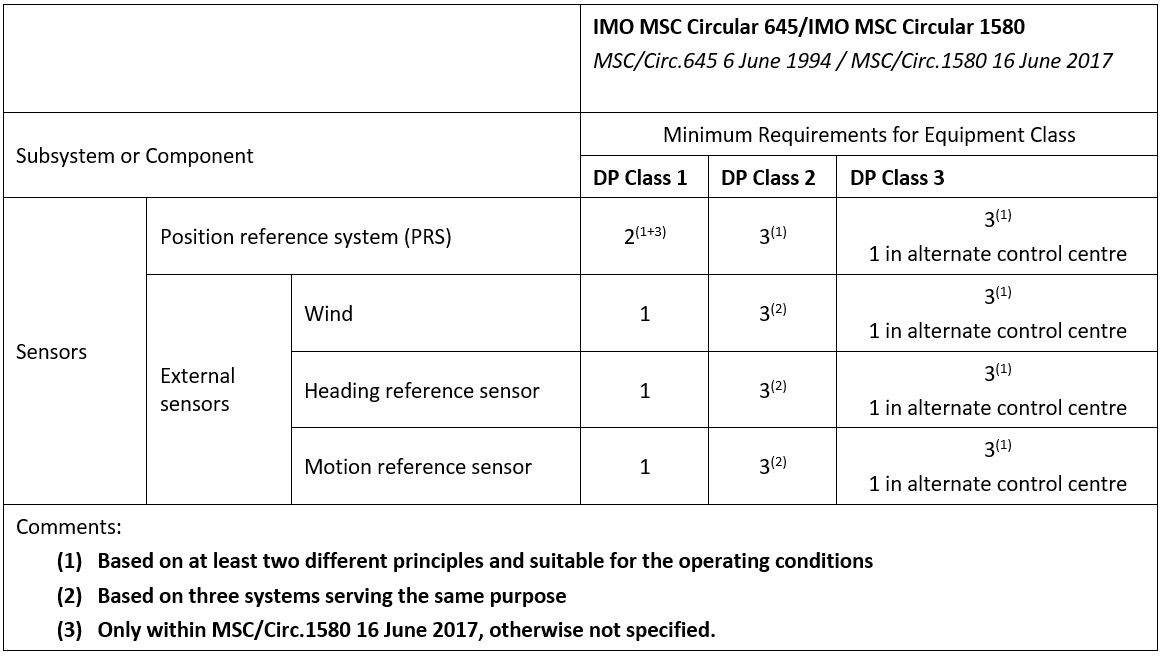Position reference systems – a timely reminder
The IMCA Marine DP committee has identified a trend of DP station keeping events relating to the incorrect use or selection of PRSs. Events reported to IMCA include incidents, where station keeping capability has been lost and undesired events where redundancy has been compromised.
Recent Events Reported to IMCA Include the Following Learnings:
- Incorrect selection of PRSs – the requirement for at least two different principles not being followed leading to position instability;
- Over reliance on one PRS, Global Navigation Satellite system (GNSS), to the exclusion of others:
- intermittent DGNSS signal outages in certain geographical locations
- use of GNS without differential correction
- common mode failures of DGNSS caused by selection of hardware from single supplier and differential positioning services from one supplier
- DGNSS signal reception becoming unsteady because of either shielding or shadowing;
- DP reference sensor UPS supplies not following the redundancy concept of the vessel – loss of UPS led to no references online;
- During cargo operations, removal of relative positioning system transponders/reflectors by installation crew prior to station keeping activities being completed;
- Laser based system locking onto a crew member standing close to the reflector (in a restricted area);
- Incorrect selection of PRSs for the mission requirements;
- Poor MoC processes leading to loss of redundancy of Position Reference Sensors – rewiring of sensors post worst-case failure to finish the mission;
- Incorrect PRS selection for use at a mobile installation leading to conflict between absolute and relative sensors causing drift off;
- Feed from the GNSS to the gyro leading to inaccurate latitude and speed correction signals;
- Poor MoC leading to the antenna of one GNSS being connected to two GNSS systems, creating a common mode failure;
- Select the most suitable reference origin considering the mission to be completed;
- In the case of instability, know the manufacturer’s procedure for resetting the reference origin;
- Make sure to fully understand the different tests carried out on each PRS and the actions to be taken when a test suggests that a position measurement is not accurate.
IMO Guidelines
The guidelines for vessels with DP systems (MSC/Circ.645) were approved by the IMO Marine Safety Committee (MSC) meeting 63 in May 1994 to provide the industry with an international standard for DP systems on all types of vessels. From these guidelines, classification societies create the rules with which DP vessels are designed and built.
IMO MSC/Circ.645 was updated in 2017 by IMO MSC/Circ. 1580 for new vessels and units with DP systems. This new circular provides an amended standard reflecting the development in DP operation since 1994 and current DP technologies. For vessels and units constructed on or after 1 July 1994 but before 9 June 2017, the previous version of the guidelines (MSC/Circ.645) may continue to be applied, however it is recommended that section 4 (operational requirements) of the present guidelines be applied to all new and existing vessels and units, as appropriate. The table below identifies the requirements of the two guidance documents with respect to PRSs and external sensors:

There are some other specific functional requirements set out in the latest IMO guidance related to PRSs and external sensors as follows:
- The reference systems and sensors should be distributed on the UPSs in the same manner as the control systems they serve, so that any power failure will not cause loss of position keeping ability;
- New requirement for equipment Class 1 vessels:
- for equipment class 1, at least two independent PRSs should be installed and simultaneously available to the DP control system during operation;
- Further emphasis of the isolation required for equipment class 3 vessels:
- for equipment class 3, one of each type of sensor should be connected directly to the backup DP control system and should be separated by an A-60 class division from the other sensors. If the data from these sensors is passed to the main DP control system for their use, this system should be arranged so that a failure in the main DP control system cannot affect the integrity of the signals to the backup DP control system.
The IMO guidance document does not specifically address mission requirements. It is the responsibility of owners and operators of vessels to ensure that their vessels are equipped with the appropriate PRSs for the missions they intend to undertake.
DP Event
Published: 30 November 2018
Download: IMCA DPE 04/18
Submit a Report
The following case studies and observations have been compiled from information received by IMCA. All vessel, client, and operational data has been removed from the narrative to ensure anonymity.
Case studies are not intended as guidance on the safe conduct of operations, but rather to assist vessel managers, DP operators and DP technical crew in appropriately determining how to safely conduct their own operations. Any queries should be directed to IMCA at [email protected]. Members and non-members alike are welcome to contact IMCA if they have experienced DP events which can be shared anonymously with the DP industry.
IMCA’s store terms and conditions (https://www.imca-int.com/legal-notices/terms/) apply to all downloads from IMCA’s website, including this document.
IMCA makes every effort to ensure the accuracy and reliability of the data contained in the documents it publishes, but IMCA shall not be liable for any guidance and/or recommendation and/or statement herein contained. The information contained in this document does not fulfil or replace any individual’s or Member's legal, regulatory or other duties or obligations in respect of their operations. Individuals and Members remain solely responsible for the safe, lawful and proper conduct of their operations.
